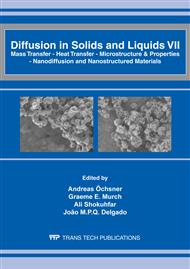p.587
p.593
p.599
p.605
p.612
p.620
p.626
p.632
p.641
Problem of Acceptability of Internal Porosity in Semi-Finished Cast Product as New Trend "Tolerance of Damage" Present in Modern Design Office
Abstract:
Discontinuities in cast products, obtained from a liquid state of an alloy, are the result of phenomena occurring during multiphase system crystallization. On the one hand, compacted defects as a shrinkage pipe are relatively easy to eliminate. On the other hand, it is known that presence of fine shrinkage and gas porosity is unavoidable. Detectability of these dispersed discontinuities depends on type of inspection method applied. Structure, including intensity and location of porosity zones, is dependent on the type of the alloy, casting configuration and conception of technological solution, related with control of velocity of the heat extraction to the mould. Thus, mechanical properties in the volume of a casting are not homogenous and are strongly reduced only in the zones of porosity. However, in strength calculations of cast products, this obvious fact is not taken into consideration. The rule of material homogeneity is applied instead, along with drastic increase of factor of safety. The paper indicates benefits of precise determination of limits of porosity zones located in the casting, using the NTD methods (for example, Phased Array ultrasonic tomography). Coordinates of porosity zones in 3D, introduced into CAD geometry and assigned with different properties allow to estimate the actual state of stress and strain of real object using FEM methods (systems like Ansys, Comsol). Load justified by operating conditions and application of tolerance of damage rule, with simultaneous reference to the limited state of stress according to LOV (Loss of Volume) and LEFM (Linear Elastic Fracture Mechanics) methods should find their place in design procedures of cast products, which will allow for better use of material and reduction of weight of the casting. This approach, named Tolerance of damage concerning the castings is the motto of this paper.
Info:
Periodical:
Pages:
612-619
Citation:
Online since:
April 2012
Authors:
Price:
Сopyright:
© 2012 Trans Tech Publications Ltd. All Rights Reserved
Share:
Citation:


